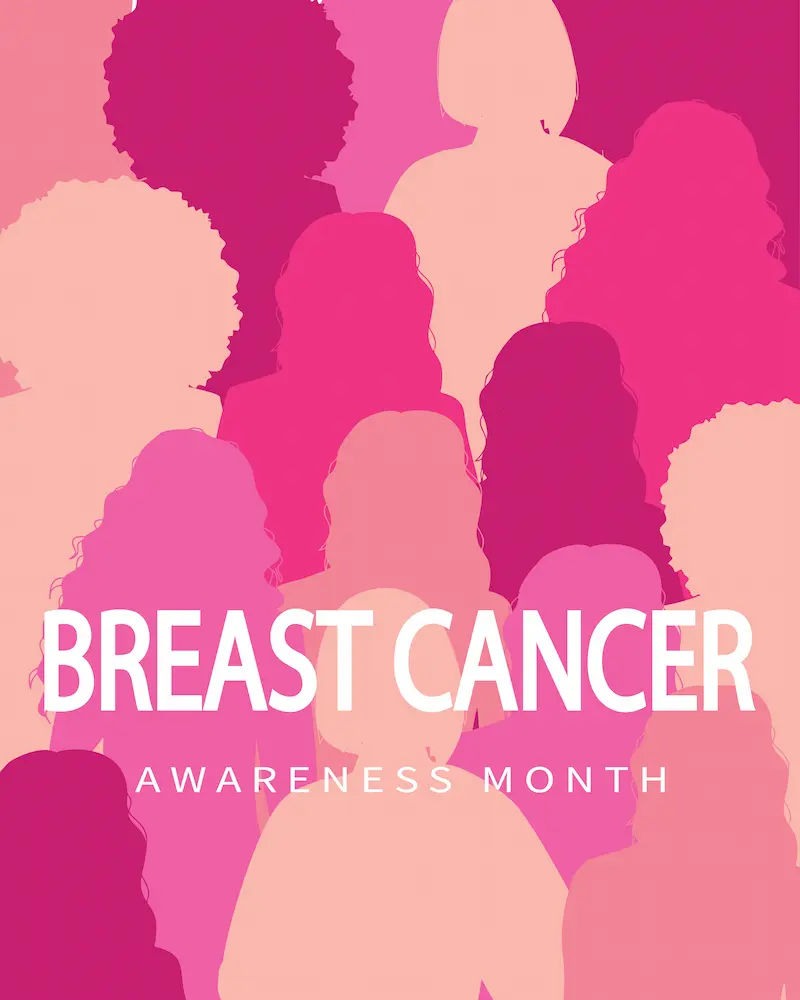Changing the Spectrum of Breast Cancer Care: A Practical Guide
Know about breast cancer care, what it is, screening, recognising symptoms, diagnosis, staging, radiation therapy, surgery, 10 popular shifts in breast cancer care, fertility, side effects, and daily life.

Written by Dr. J T Hema Pratima
Reviewed by Dr. Rohinipriyanka Pondugula MBBS
Last updated on 21st Oct, 2025
_3.webp?tr=q-80,f-webp,w-350,dpr-2,c-at_max 700w)
Introduction
Breast cancer care is changing fast, and that’s good news. Today, doctors tailor treatment to each person’s biology, goals, and life circumstances. When experts talk about the “spectrum” of breast cancer, they’re referring to the wide range of tumour types, stages, risks, and personal factors that shape decisions. Understanding this spectrum enables you to ask more informed questions, make more confident choices, and plan your next steps effectively. In this guide, you’ll learn how screening is evolving, what tests matter most, and how treatments—from breast-conserving surgery to targeted therapy and immunotherapy are decided. You’ll also find tips for navigating side effects, protecting fertility, and building a survivorship plan that fits your life.
If you notice new breast symptoms or changes, or if symptoms persist beyond two weeks, consult a doctor online with Apollo24|7 for further evaluation.
The “Spectrum” of Breast Cancer: What It Really Means
- Biological diversity: ER/PR, HER2, Ki-67, and genomic risk
- Cancers that are hormone receptor-positive (ER/PR+) often grow more slowly and respond to endocrine therapy. HER2-positive cancers grow faster but respond to HER2-targeted drugs.
- Triple-negative breast cancer (TNBC) lacks ER, PR, and HER2, often requiring chemo and sometimes immunotherapy.
- Ki-67 (a proliferation marker) and genomic assays (like Oncotype DX or MammaPrint) can refine risk and help personalise your breast cancer treatment plan.
Consult a Top Oncologist for Personalised Advice
Stage spectrum: from in situ to metastatic disease
Ductal carcinoma in situ (DCIS) is non-invasive; invasive cancer can be stage I–III (localised/regionally spread) or stage IV (metastatic). Stage guides whether surgery-first or systemic therapy-first makes more sense.
Human spectrum: age, gender, pregnancy, comorbidities, and access
Young adults may prioritise fertility preservation; older adults may individualise care based on other health issues. Men can get breast cancer too, typically ER+; treatment often parallels women’s care. Access to screening and specialised care also varies and affects outcomes.
Early Detection and Screening: What’s New and What Matters
Mammography, tomosynthesis (3D), ultrasound, MRI
Mammography remains the cornerstone of early detection. Digital breast tomosynthesis (DBT or “3D mammography”) can reduce call-backs and find more cancers, especially in dense breasts.
Ultrasound and MRI are supplemental tools, particularly useful for high-risk individuals or dense breast tissue. MRI is recommended annually for those with ≥20% lifetime risk (e.g., strong family history, genetic mutations).
Age to start, frequency, and individualised risk
- The USPSTF recommends biennial screening from age 40 to 74 for average-risk women; other organisations endorse starting at 40 with annual screening for many. Discuss intervals with your clinician.
- If you have a higher risk (BRCA1/2 or other gene mutations, a strong family history, or prior chest radiation), your doctor may recommend earlier and more frequent screening, often including an MRI.
Dense breast tissue: practical next steps
Dense tissue can mask cancers on mammograms. If your report mentions density, ask about DBT and whether ultrasound or MRI is appropriate for you. Some regions mandate density notification; use it as a prompt for a personalised plan.
Diagnosis and Staging: Tests that Guide Decisions
The diagnosis and staging process includes:
Core needle biopsy, pathology report, and receptor testing
A core needle biopsy confirms cancer and tests receptors (ER/PR, HER2). Request your pathology report and have your team explain it line by line to understand how it affects your treatment.
If symptoms or diagnostic uncertainty persist, consult a doctor online with Apollo24|7 or book a physical visit for a second opinion.
Imaging for staging: when scans are needed
Early-stage, asymptomatic cancers often don’t need full-body scans. Imaging (CT, PET, bone scan) is more common if there are symptoms suggestive of spread or if the tumour is larger or node-positive.
Genomic assays (Oncotype DX, MammaPrint) and who benefits
- For many ER+/HER2−, node-negative tumours, Oncotype DX helps decide if chemo adds benefit to endocrine therapy. TAILORx showed many women can safely skip chemotherapy based on their recurrence score, particularly women over 50 with midrange scores.
- RxPONDER found that in ER+/HER2− cancers with 1–3 positive nodes and a recurrence score ≤25, postmenopausal women did not benefit from chemo; premenopausal women did—information that changes real-world decisions.
Localised Disease: Surgery and Radiation Choices
Let's find out how to handle localised disease through surgery and radiation:
Breast-conserving surgery vs mastectomy: outcomes and tradeoffs
For most early cancers, lumpectomy plus radiation is as effective as mastectomy for survival, with different cosmetic and recovery considerations. Choice depends on tumour size relative to the breast, multifocality, genetics, and personal preference. Some small HER2+ and low-risk ER+ tumours do well with limited surgery and focused systemic therapy which is another example of the spectrum approach.
Axillary surgery updates (sentinel biopsy, de-escalation)
Sentinel lymph node biopsy checks for spread with fewer side effects than full node removal.
ACOSOG Z0011 showed that many patients undergoing lumpectomy with limited sentinel node positivity may safely avoid full axillary dissection when receiving whole-breast radiation, reducing lymphedema risk.
Modern radiation: hypofractionation and partial breast options
- Hypofractionated regimens (fewer, larger doses) are standard and convenient, with similar outcomes and safety to longer courses.
- FAST-Forward showed that a 5-fraction schedule over one week can be effective for appropriately selected early breast cancers.
- Partial breast irradiation may be an option for some low-risk patients. Discuss candidacy with your radiation oncologist.
Systemic Therapy Across the Spectrum: From Hormones to Immunotherapy
HR-positive/HER2-negative: endocrine therapy, CDK4/6, and chemo
- Endocrine therapy (tamoxifen or aromatase inhibitors) is the backbone. Duration is typically 5 years; extending to 7–10 years is individualised.
- CDK4/6 inhibitors improve outcomes in metastatic HR+ disease and, in high-risk early disease, adjuvant abemaciclib improved invasive disease-free survival (monarchE).
- Genomic assays guide chemo decisions; many can avoid chemo when recurrence score is low to intermediate (age-dependent).
HER2-positive: anti-HER2 regimens and antibody-drug conjugates
- Early-stage HER2+ cancers are treated with trastuzumab (± pertuzumab) plus chemo; the APT trial supports de-escalated paclitaxel + trastuzumab for small, node-negative tumors.
- In metastatic disease, antibody-drug conjugates like trastuzumab deruxtecan have improved outcomes compared with prior standards (DESTINY-Breast03).
Triple-negative: chemo-immunotherapy and PARP inhibitors
- For early TNBC, adding pembrolizumab to neoadjuvant chemotherapy improved pathologic complete response and event-free survival (KEYNOTE-522).
- PARP inhibitors benefit people with BRCA mutations; in high-risk early disease, adjuvant olaparib improved outcomes (OlympiA).
What’s Changing Now: 10 Shifts Reshaping Management
- Screening starts at 40 for average risk (USPSTF 2024), with broader adoption of tomosynthesis for better detection in dense breasts.
- More neoadjuvant therapy (before surgery) to downstage tumours, assess response, and tailor additional treatment—especially in HER2+ and TNBC.
- De-escalation where safe: e.g., APT regimen for small HER2+ tumours; avoiding full axillary dissection after positive sentinel nodes in selected patients.
- Escalation when needed: adjuvant abemaciclib for high-risk HR+; adjuvant olaparib for BRCA-mutated high-risk; pembro for early TNBC.
- Hypofractionated and ultra-hypofractionated radiation courses for convenience without compromising outcomes.
- Genomic assays standardising who really needs chemotherapy (TAILORx, RxPONDER)
- Antibody-drug conjugates are setting new standards in metastatic settings and moving earlier.
- Broader access to genetic testing and counselling to guide therapy and prevention.
- AI in imaging and risk modelling; early work in liquid biopsy (ctDNA) to detect minimal residual disease is promising but not yet standard.
- Focus on survivorship, quality of life, and financial toxicity as integral to care, not afterthoughts.
Living Through Treatment: Side Effects, Fertility, and Daily Life
Managing fatigue, neuropathy, and bone health
- Fatigue: pace yourself, short daily activity, and sleep hygiene; screen for anaemia or thyroid issues. If fatigue or symptoms persist, consult a doctor online with Apollo24|7 for further evaluation.
- Neuropathy from certain chemotherapies: dose adjustments, physical therapy, and protective strategies can help.
- Bone health: endocrine therapy may thin bones; calcium/vitamin D, weight-bearing exercise, and medications (bisphosphonates/denosumab) can reduce fractures and may lower recurrence risk in postmenopausal HR+ patients.
Fertility preservation and pregnancy
- Before chemo or endocrine therapy, ask urgently about egg or embryo freezing. Fertility-preserving protocols with temporary ovarian suppression are possible.
- Pregnancy during or after breast cancer requires specialised planning; many treatments are safe after the first trimester, but decisions are highly individualised.
Work, finances, and mental health
Discuss workplace accommodations; social workers can help navigate leave benefits and insurance.
Anxiety and depression are common; brief counselling and peer support improve outcomes.
Apollo24|7 offers convenient home collection for routine blood tests your team may order during treatment (e.g., complete blood count or metabolic panels), which can reduce hospital visits.
Survivorship and Follow-Up: Staying Well Long Term
Surveillance schedules and what to expect:
- Regular physical exams and annual mammography (or MRI if indicated). Routine scans or tumour markers aren’t recommended without symptoms in early-stage survivors.
- Manage treatment-related late effects (cardiac monitoring after HER2 therapy, bone density with endocrine therapy).
Lymphedema prevention and care
Early education and physical therapy reduce risk. Report swelling, heaviness, or tightness promptly; early intervention matters.
Lifestyle changes with real impact
- Physical activity, a balanced diet, limited alcohol, and maintaining a healthy weight can reduce recurrence risk and improve overall health.
- Create a written survivorship care plan covering schedules, side-effect management, mental health, and primary care integration.
Special Populations and Situations
Young adults and men with breast cancer
- Young adults may face more aggressive subtypes and unique survivorship concerns (fertility, career, long-term endocrine therapy).
- Men commonly have ER+ disease; endocrine therapy (e.g., tamoxifen) is often effective. Genetic counselling is important, given the higher BRCA mutation prevalence.
Older adults and comorbidities
Treatment plans should account for overall health and preferences; de-escalation and supportive care often improve quality of life without compromising outcomes. [7]
Metastatic disease: goals, options, and hope
- Even when a cure isn’t possible, many live well for years with sequential therapies tailored to subtype—CDK4/6 inhibitors, HER2-targeted drugs, PARP inhibitors, and immunotherapy depending on the tumour.
- Palliative care is about symptom control and living better—consider integrating it early.
How to Navigate Your Care Team and Options?
Let us see how to move along the care team and the options we have:
Multidisciplinary clinics and second opinions
- The best outcomes come from coordinated teams: surgical, medical, and radiation oncology plus pathology, radiology, genetics, rehab, and supportive care. [4]
- Consider a second opinion at key decision points (before surgery or systemic therapy). If timelines or travel are barriers, book a virtual second opinion.
Clinical trials: why and how to join
- Trials offer access to promising therapies and shape tomorrow’s standards. Ask at diagnosis and at any change in therapy. Start at the NCI database or reputable trial finders. [1]
- If your condition does not improve after trying these methods or if you’re unsure about trial eligibility, book a physical visit to a doctor with Apollo24|7 to discuss options.
Using digital tools to track and decide
Medication reminders, symptom trackers, and decision aids help you stay organised. Share your data at visits—it improves communication and decisions.
Conclusion
The most important shift in breast cancer today is personalisation. Instead of a one-size-fits-all approach, your team can use tumour biology, stage, and even genomic assays to match you with the right-sized therapy—de-escalating when it’s safe and escalating when it truly helps. Screening guidance has also evolved, with most people now starting at 40, and modern imaging tools are improving early detection. You notice new symptoms or changes, or if treatment side effects don’t improve, consult a doctor online with Apollo24|7 for timely guidance. And if lab monitoring is needed, Apollo24|7 offers a convenient home collection for common tests during treatment. The spectrum of breast cancer is broad—but with knowledge, a strong team, and a personalised plan, you can navigate it with clarity and confidence.
Consult a Top Oncologist for Personalised Advice
Consult a Top Oncologist for Personalised Advice

Dr. Gopal Kumar
Head, Neck and Thyroid Cancer Surgeon
15 Years • MBBS, MS , FARHNS ( Seoul, South Korea ), FGOLF ( MSKCC, New York )
Delhi
Apollo Hospitals Indraprastha, Delhi
(25+ Patients)

Dr. Sanchayan Mandal
Medical Oncologist
17 Years • MBBS, DrNB( MEDICAL ONCOLOGY), DNB (RADIOTHERAPY),ECMO. PDCR. ASCO
Kolkata
MCR SUPER SPECIALITY POLY CLINIC & PATHOLOGY, Kolkata

Dr Gowshikk Rajkumar
Oncologist
10 Years • MBBS, DMRT, DNB in Radiation oncology
Bengaluru
Apollo Clinic, JP nagar, Bengaluru

Dr. Rupam Manna
Radiation Specialist Oncologist
4 Years • MBBS MD(RADIO THERAPY)
Barasat
Diab-Eat-Ease, Barasat
Dr. B Shravanthi Reddy
Radiation Specialist Oncologist
8 Years • MBBS, DNB(Radiation Oncology)
Manikonda Jagir
Apollo Clinic, Manikonda, Manikonda Jagir
Consult a Top Oncologist for Personalised Advice

Dr. Gopal Kumar
Head, Neck and Thyroid Cancer Surgeon
15 Years • MBBS, MS , FARHNS ( Seoul, South Korea ), FGOLF ( MSKCC, New York )
Delhi
Apollo Hospitals Indraprastha, Delhi
(25+ Patients)

Dr. Sanchayan Mandal
Medical Oncologist
17 Years • MBBS, DrNB( MEDICAL ONCOLOGY), DNB (RADIOTHERAPY),ECMO. PDCR. ASCO
Kolkata
MCR SUPER SPECIALITY POLY CLINIC & PATHOLOGY, Kolkata

Dr Gowshikk Rajkumar
Oncologist
10 Years • MBBS, DMRT, DNB in Radiation oncology
Bengaluru
Apollo Clinic, JP nagar, Bengaluru

Dr. Rupam Manna
Radiation Specialist Oncologist
4 Years • MBBS MD(RADIO THERAPY)
Barasat
Diab-Eat-Ease, Barasat
Dr. B Shravanthi Reddy
Radiation Specialist Oncologist
8 Years • MBBS, DNB(Radiation Oncology)
Manikonda Jagir
Apollo Clinic, Manikonda, Manikonda Jagir
More articles from Breast Cancer
Frequently Asked Questions
Do all breast cancers need chemotherapy?
No. Many hormone receptor-positive, HER2-negative early cancers can avoid chemo based on genomic assays like Oncotype DX and factors such as age and nodal status. Ask about a personalised breast cancer treatment plan.
When should I start breast cancer screening?
For average-risk individuals, USPSTF recommends starting mammography at age 40 (every two years). Some choose annual screening; high-risk people may start earlier and add MRI.
What is triple-negative breast cancer, and what are my options?
TNBC lacks ER/PR/HER2. Treatment often includes chemotherapy; adding immunotherapy (pembrolizumab) in early-stage disease improves outcomes. PARP inhibitors help BRCA mutation carriers.
How long will I need endocrine therapy?
Typically five years, with possible extension to 7–10 years based on recurrence risk and side effects. Discuss benefits and tradeoffs with your oncologist.
Should I consider a clinical trial?
Yes. Trials can provide access to promising therapies and improve future care. Explore trials at diagnosis and during therapy changes. If you’re unsure, book a visit with an Apollo24|7 doctor to discuss trial options.



.webp)
